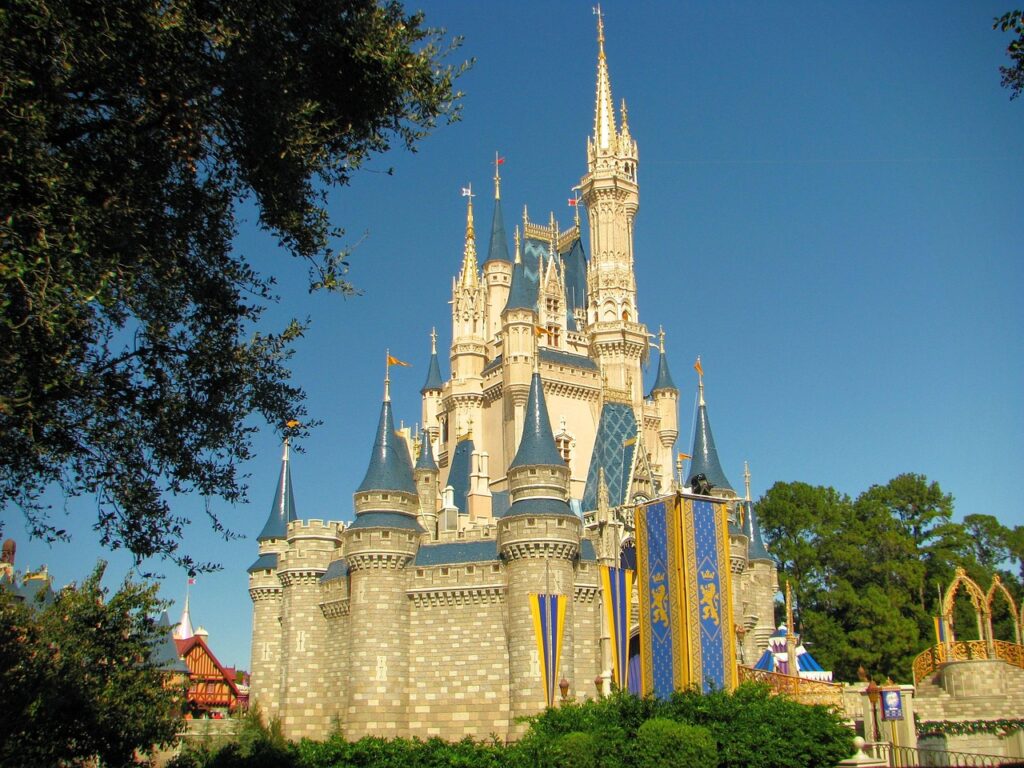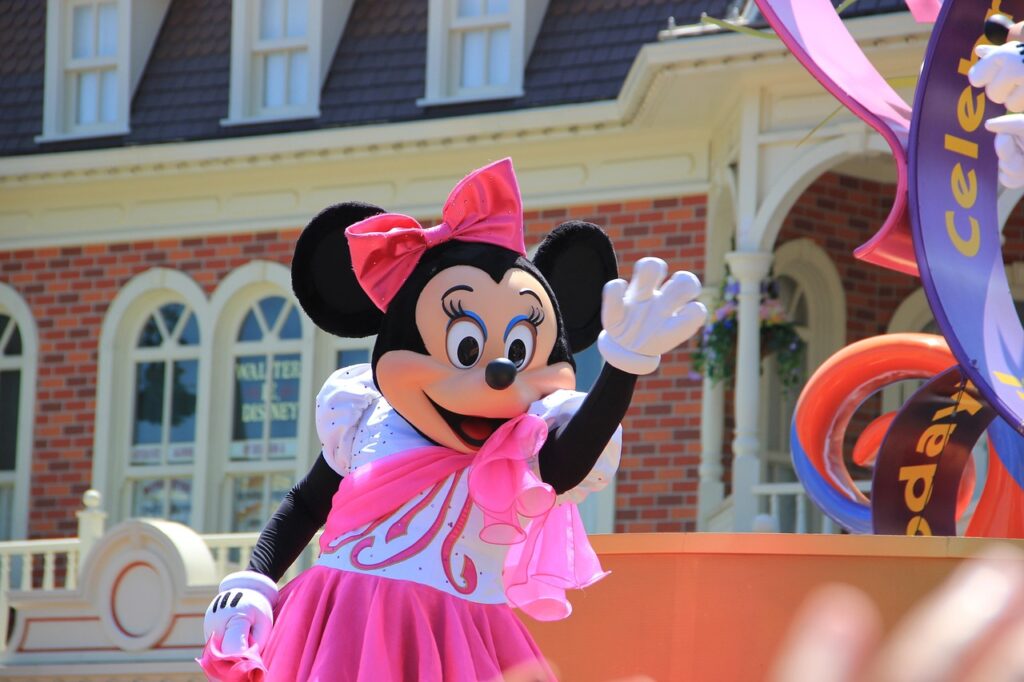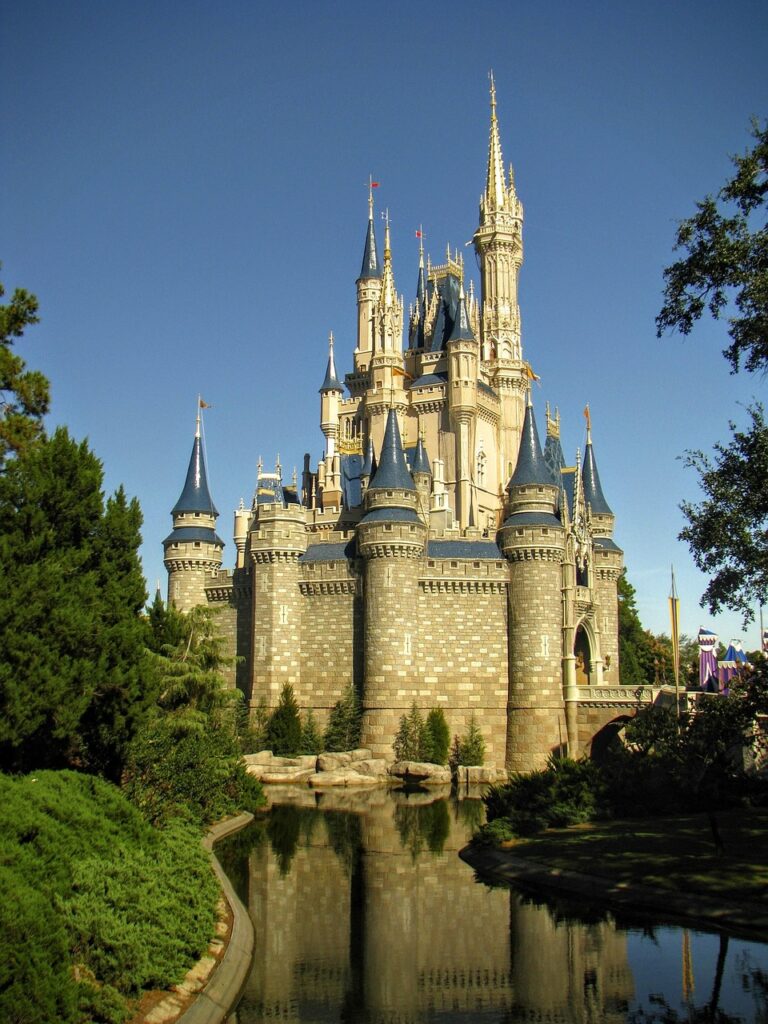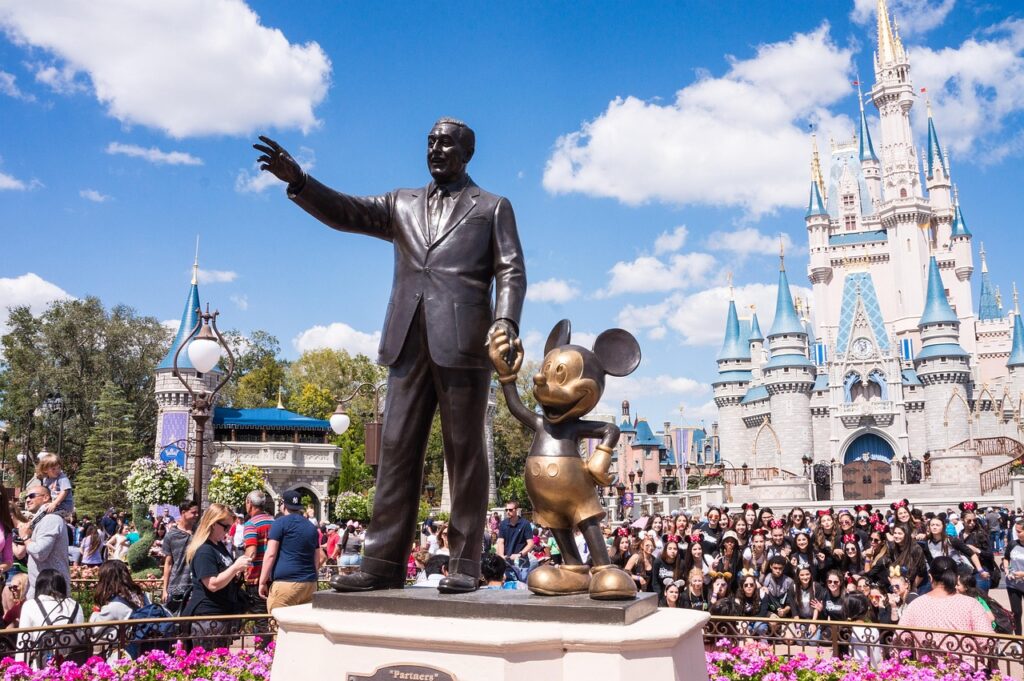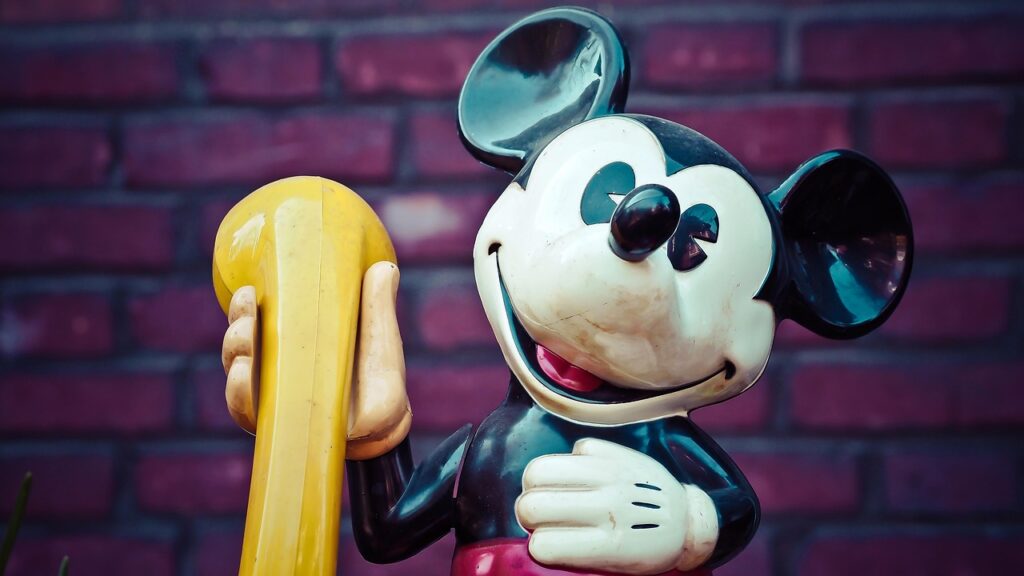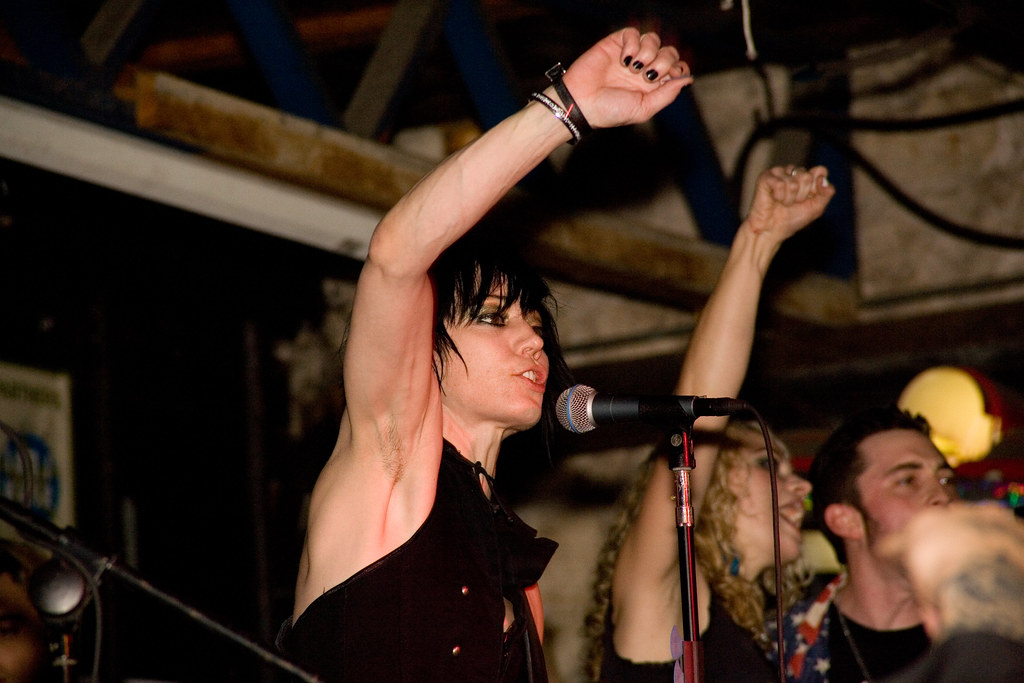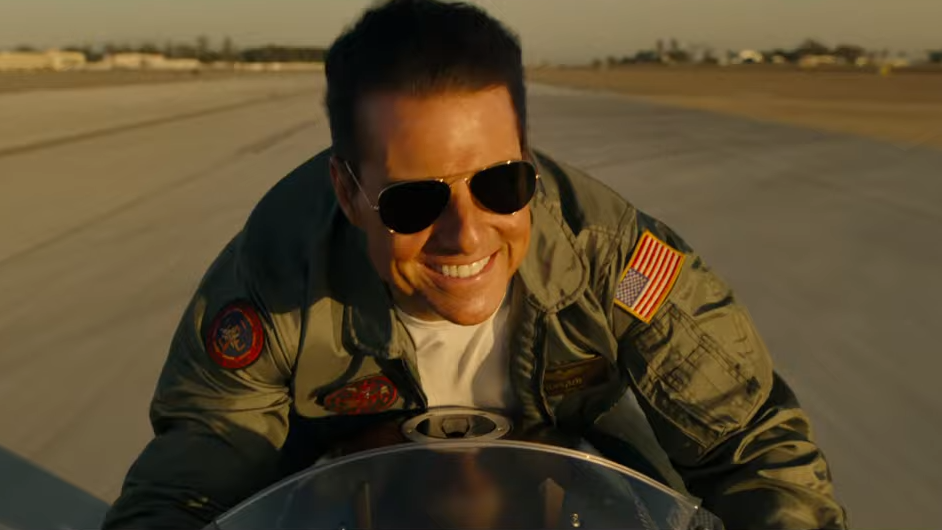
The Walt Disney Company, an enduring icon in the global entertainment landscape, is currently navigating one of its most profound periods of transformation, marked by sweeping layoffs and a comprehensive strategic overhaul. This seismic shift underscores the intense pressures facing legacy media conglomerates as consumer habits rapidly evolve and financial models are aggressively re-evaluated. The narrative unfolding at Disney is a microcosm of the broader industry’s struggle to adapt to a landscape increasingly dominated by streaming and direct-to-consumer engagement. It signifies not merely a tactical adjustment but a fundamental re-engineering of its operational core, impacting hundreds of employees across its vast empire.
At the helm of this ambitious restructuring is CEO Bob Iger, who returned to lead Disney in 2022 after a two-year retirement. His re-appointment signaled an urgent need for decisive action to steer the company through turbulent waters. Iger immediately embarked on an aggressive cost-cutting initiative, announcing plans to eliminate thousands of jobs and reduce spending by billions of dollars. This move was a direct response to the “rapid pace of industry transformation” and a strategic push to operate more efficiently, reflecting a serious commitment to realign the company with contemporary market realities.
The overarching challenges driving these unprecedented changes include consumers’ growing preference for streaming services like Disney+ over traditional television and film distribution, alongside significant financial pressures that have intensified for legacy media companies. Disney’s multi-faceted approach to addressing these issues encompasses not only headcount reductions but also a complete re-evaluation of its content strategy, management structure, and investment priorities. The aim is to create a more agile and profitable organization capable of sustained success in a highly competitive and fluid entertainment ecosystem.
1. **The Immediate Wave: Hundreds of Global Layoffs**The Walt Disney Company has recently announced yet another significant round of layoffs, impacting several hundred employees globally across multiple critical teams. These job cuts, which commenced on a Monday, are not isolated incidents but rather a continuation of a broader, sustained effort to streamline operations and enhance efficiency across the conglomerate. The affected departments span a wide array of functions essential to Disney’s content creation and distribution pipeline, underscoring the company’s commitment to a more lean and focused operational model.
Specifically, the latest reductions are falling on employees in marketing, publicity, casting, and development. These are the very departments responsible for identifying talent, crafting compelling narratives, and bringing Disney’s beloved stories to global audiences, as well as promoting them to generate revenue. The impact extends further into corporate financial operations, indicating a holistic approach to cost containment that penetrates both creative and administrative divisions. A Disney spokesperson confirmed these layoffs, emphasizing that while no entire teams are being eliminated, the cuts are strategically targeted to optimize business functions.
This “surgical” approach to minimize the number of impacted employees reflects a deliberate strategy by Disney to achieve its efficiency goals without completely dismantling core competencies. These job cuts are reportedly concentrated primarily in Los Angeles, a key hub for Disney’s film and television operations, though the company statement referred to global impacts. The layoffs highlight the industry’s ongoing contraction, with Hollywood grappling with reduced production and employment figures, suggesting that the era of lavish spending and expansive workforces is undergoing a fundamental re-evaluation.
Read more about: Inside the 2023 Layoff Wave: A Full List of Major US Companies Making Significant Workforce Reductions
2. **Bob Iger’s Vision: The $7.5 Billion Cost-Cutting Mandate**Central to Disney’s sweeping restructuring is the assertive strategy laid out by CEO Bob Iger, who returned to the company’s helm in late 2022. Iger’s comeback was predicated on a clear mandate: to navigate Disney through its current financial and operational complexities. In early 2023, he unveiled an ambitious plan to eliminate 7,000 jobs across the company, a significant initial step in a broader initiative aimed at reducing spending by an astounding $7.5 billion. This target was later increased from an initial $5.5 billion, signaling the depth of the required financial recalibration.
Iger’s directive is not merely about trimming fat; it represents a profound re-evaluation of how Disney allocates its resources and operates its diverse portfolio. The emphasis is on improving profitability and adapting to the rapidly changing media landscape. This strategic objective underpins all decisions, from staffing levels to content investments. The initial rounds of layoffs, announced in 2023, were part of this significant drive, affecting thousands of workers and setting the stage for the continuous adjustments seen throughout 2024 and 2025.
These cost-cutting measures are designed to ensure Disney’s long-term financial health and competitiveness. By streamlining leadership, reducing redundancies, and optimizing operations, Iger aims to create a more agile organization. This forward-looking approach reflects a determination to align Disney’s vast operations with current consumer preferences and industry trends, ensuring it remains a dominant force in entertainment despite the immense pressures it faces.
3. **Industry Transformation: The Pivot from Traditional TV to Streaming**The core catalyst for Disney’s massive organizational shift is the undeniable transformation sweeping through the entertainment industry, primarily driven by the meteoric rise of streaming services. Consumers are rapidly abandoning traditional cable-TV subscriptions in favor of on-demand digital platforms, a trend that has significantly altered the revenue streams and operational models for legacy media companies like Disney. This profound shift has created financial challenges for companies deeply invested in conventional television and film distribution, necessitating a radical adaptation.
The context explicitly states that “consumers are cancelling cable-TV subscriptions in favor of streaming services, a shift that crimps advertising and distribution revenue for operators of traditional channels.” This reality has forced Disney to acknowledge and respond to a marketplace where direct-to-consumer engagement, exemplified by Disney+ and Hulu, is paramount. The company’s strategic focus has increasingly pivoted towards bolstering its streaming capabilities, investing heavily in original content that can attract and retain subscribers, thereby driving growth in this critical segment.
This broader industry movement has spurred a “massive reorganization of the business” across Hollywood. While Disney initially weighed divesting its own TV networks, including ABC, it ultimately decided to retain these assets, albeit under a restructured model. The shift means reallocating resources from traditional TV operations to fuel the growth of its streaming platforms. This ensures Disney remains competitive and aligns its content delivery mechanisms with current viewer preferences, which demand flexibility, variety, and accessibility.
4. **Financial Realities: Box Office Flops and Revenue Pressures**While the broader industry shift to streaming is a major driver, Disney has also faced acute financial pressures stemming from underperforming theatrical releases and declining traditional revenue streams. The company disclosed that it lost “almost $1 billion due to box office flops in 2023.” This staggering figure underscores the direct impact of films that failed to resonate with audiences or meet commercial expectations, a critical concern for a studio historically synonymous with cinematic success.
Among the specific titles cited for underperformance in 2023 were Pixar’s *Elemental* and the live-action remake of *Snow White*. *Elemental* was deemed a box office flop, while *Snow White* “did not perform as well as expected at cinemas, after facing a number of negative reviews.” These instances highlight the challenges in consistently delivering blockbuster hits in an increasingly discerning and fragmented market. The financial repercussions of such flops directly contribute to the need for aggressive cost-cutting and a re-evaluation of content investment strategies.
Beyond the theatrical struggles, “declining linear TV viewership” continues to exert significant pressure on Disney’s financial health. This erosion of traditional broadcast and cable audiences directly impacts advertising and subscription revenues, further necessitating the pivot to streaming. CEO Bob Iger, in an earnings call, stated that Disney would cut an additional $2 billion in expenses in 2024, directly following the acknowledgment of these box office losses. He emphasized a renewed focus on quality over quantity, stating, “I’ve always felt that quantity can be actually a negative when it comes to quality. That’s exactly what happened. We lost some focus.”
5. **Targeted Divisions: Marketing, Publicity, Casting, and Development**The latest rounds of layoffs at Disney have distinctly impacted core creative and promotional divisions, highlighting a strategic intent to streamline the processes by which content is conceived, talent is secured, and projects are brought to market. Departments overseeing movie and TV marketing, publicity, casting, and development have experienced significant job cuts. These divisions are fundamental to a studio’s success, as they are responsible for shaping public perception, attracting audiences, and identifying the next generation of stars and stories.
The layoffs in marketing and publicity teams reflect a concerted effort to optimize promotional spending and strategy in an era where digital engagement and targeted advertising often yield greater returns than traditional campaigns. By reducing staff in these areas, Disney aims to achieve greater efficiency in its outreach and promotion efforts. The changes also suggest a recalibration of how content is developed and brought through the pipeline, seeking to reduce redundancies and enhance agility in project initiation and execution.
Moreover, the impact on casting and development signals a critical re-evaluation of talent acquisition and project conceptualization. As the company shifts its focus towards streaming and a more curated content slate, the resources dedicated to these foundational stages are being realigned. This move is part of the broader strategy to operate more efficiently and adapt to evolving industry dynamics, ensuring that Disney’s creative output is both high-quality and financially viable in the current landscape.
6. **Corporate Restructuring: Legal, HR, Finance, and Communications**Disney’s comprehensive restructuring extends well beyond its creative and content-producing arms, deeply impacting its vital corporate support functions. The company has systematically implemented job cuts across crucial departments such such as legal, human resources (HR), finance, and communications. These reductions are not isolated; for instance, “in September 2024, around 300 employees were cut across corporate departments including legal, HR, finance, and communications” in the U.S. This demonstrates a clear directive to enhance operational efficiency and reduce overhead across the entire organizational structure.
The strategic rationale behind targeting these corporate divisions is rooted in the drive for greater agility and optimized resource allocation. By streamlining leadership and reducing redundancies within these essential services, Disney aims to improve decision-making processes and foster greater collaboration across its diverse divisions. The objective is to create a more responsive organizational framework that can swiftly adapt to industry changes and consumer demands, positioning the company for sustained success.
Workers in Disney’s corporate finance departments have been explicitly impacted, reflecting the intense focus on cost savings and fiscal prudence under Bob Iger’s leadership. These organizational realignments are designed to ensure that Disney’s operational backbone is as lean and effective as its creative output. The emphasis on business and creative dynamics ensures that every part of the company contributes directly to its long-term vision of profitability and market leadership in a transforming entertainment landscape.
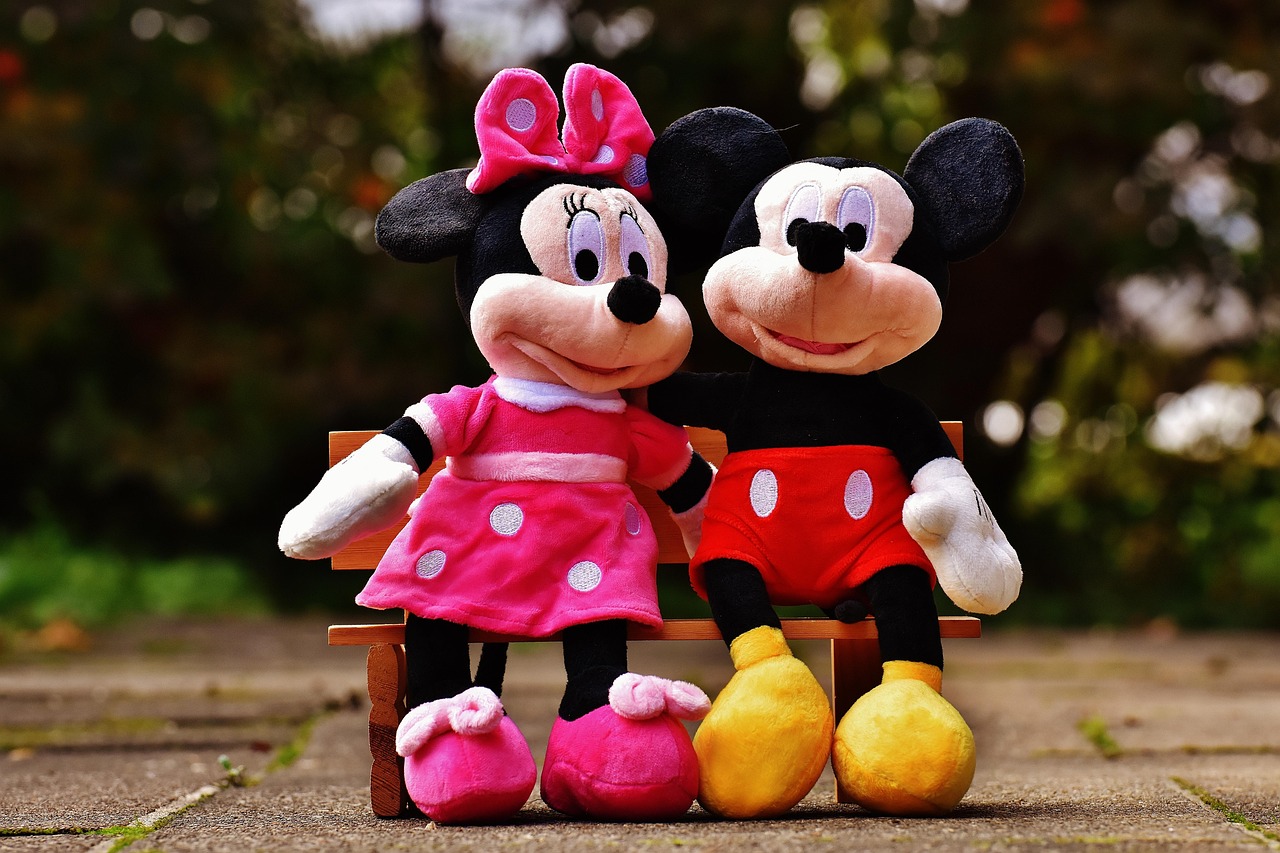
7. **Departmental Reorganizations: Pixar, National Geographic, Freeform, and ABC Signature**Beyond the initial waves of layoffs targeting broader marketing and corporate functions, Disney’s restructuring has deeply impacted several specific, high-profile divisions, signaling a targeted approach to operational optimization. One significant area of change has been Pixar, the animation studio synonymous with groundbreaking storytelling. In 2024, Pixar underwent substantial staff reductions, with employee numbers projected to drop from approximately 1,300 to under 1,000, and 175 employees, or 14% of its workforce, receiving layoff notices on May 21. These cuts were attributed to scaling back the development of original streaming series, reflecting a re-evaluation of content strategy within the animation powerhouse.
Further reorganizations extended to Disney’s television networks, with National Geographic (NatGeo) and Freeform experiencing significant job eliminations. Reports indicated that NatGeo, in particular, would see a substantial 13% reduction in its staff, demonstrating the intensity of the cost-cutting measures even within niche but established brands. These cuts across channels like NatGeo and Freeform, alongside local TV stations, underscore a broader recalibration of resources away from traditional linear television towards the company’s burgeoning streaming platforms.
Adding to the structural changes, October 2024 saw a pivotal consolidation within Disney’s scripted content divisions. ABC Signature, one of the company’s long-standing production labels, was shut down, with its operations subsequently merged into 20th Television. This move was a clear strategic effort to streamline production pipelines and consolidate creative teams across ABC and Hulu Originals. Such mergers are designed to reduce redundancies, enhance efficiency, and foster greater agility in content development and delivery, aligning with Iger’s broader vision for a more focused and profitable enterprise.
8. **The Strategic Pivot: Quality Over Quantity in Content Creation**Central to Disney’s revamped strategy is a pronounced shift in its approach to content creation, moving away from a high-volume output towards a renewed emphasis on quality and impactful storytelling. CEO Bob Iger articulated this philosophy with clarity, stating, “I’ve always felt that quantity can be actually a negative when it comes to quality. That’s exactly what happened. We lost some focus.” This candid assessment reflects a recognition that an expansive, sometimes unfocused, content slate can dilute brand value and strain financial resources without guaranteeing audience engagement or critical success.
This strategic pivot has direct implications for Disney’s production pipeline and investment priorities. The company is committed to producing less content in 2024 and beyond, prioritizing projects that are expected to resonate deeply with audiences and deliver strong commercial and critical returns. This focus aims to recapture the studio’s reputation for unparalleled creative excellence, ensuring that each new release, whether for theatrical distribution or streaming, contributes meaningfully to Disney’s brand legacy and financial performance.
The real-world impact of this philosophy is already becoming evident in the performance of recent releases. While a live-action remake of *Snow White* reportedly did not perform as well as expected at cinemas, facing a number of negative reviews, other productions have shown promising results. Notably, Disney’s latest animated film, *Lilo & Stitch*, broke box office records in the U.S. for the Memorial Day holiday weekend, achieving global ticket sales exceeding $610 million since its May release. Such successes reinforce the argument that a concentrated effort on high-quality, appealing content can yield significant returns, validating Iger’s strategic direction.

9. **The Central Role of Disney+ and Hulu in the Streaming Strategy**The ongoing transformation at Disney is inextricably linked to the performance and strategic positioning of its direct-to-consumer streaming services, Disney+ and Hulu. Recognizing consumers’ burgeoning preference for on-demand digital platforms, Disney has progressively pivoted its core business model towards bolstering these services, making them central to its future growth and profitability. The company has explicitly acknowledged that the shift away from traditional cable TV subscriptions “crimps advertising and distribution revenue for operators of traditional channels,” necessitating a robust streaming strategy.
This strategic prioritization of streaming is reflected in both subscriber growth and efforts to improve profitability within the direct-to-consumer segment. Disney+ saw a notable 126 million subscriber increase from the first quarter of 2025, signaling continued consumer adoption. While the service had previously been “hemorrhaging money,” Disney managed to curb losses by implementing judicious price hikes for subscriptions. These financial adjustments, coupled with a sharpened focus on original content, are crucial steps towards making streaming a financially viable and dominant revenue stream for the company.
Investment in original content for Disney+ and Hulu remains a cornerstone of this strategy. By reallocating resources from traditional TV operations, Disney aims to produce exclusive series and films that can attract and retain subscribers, thereby driving sustained growth in this critical segment. This commitment ensures that Disney remains competitive in the crowded streaming landscape, aligning its content delivery mechanisms with current viewer preferences that demand flexibility, variety, and accessibility across a diverse and high-quality content library.
Read more about: Unmasking the Price Tag: 11 Sneaky Smart Home Costs That Can Quietly Drain Your Wallet
10. **Recent Financial Performance: Q2 2025 Earnings and Growth Drivers**Despite the extensive restructuring and ongoing challenges, The Walt Disney Company’s most recent financial disclosures reveal encouraging signs of stabilization and growth, particularly in its Q2 2025 earnings report. The company reported a robust 7% year-over-year increase in revenue, reaching $23.6 billion, a strong indicator of its enduring market presence and the initial success of its strategic adjustments. This revenue growth signals a positive trajectory amid a period of intense operational recalibration, reflecting effective management in a competitive environment.
Crucially, the direct-to-consumer segment, which includes Disney+ and Hulu, demonstrated a significant turnaround in profitability. The company reported a $289 million rise in direct-to-consumer operating profit, totaling $336 million. This shift from losses to profitability in its streaming division is a pivotal achievement, affirming the efficacy of recent strategies, including subscription price adjustments and a more disciplined approach to content investment. This financial momentum underscores the potential for streaming to become a consistent contributor to Disney’s bottom line.
The overall financial health was further buoyed by the strong performance of other key divisions. Much of the company’s recent financial momentum was primarily driven by substantial growth in Disney Experiences, encompassing its global theme parks and related ventures, as well as its sports divisions. CEO Bob Iger has even hinted at the potential for new job creation in these high-performing areas, suggesting that while some parts of the business are streamlining, others are poised for expansion and continued investment, highlighting a dynamic reallocation of resources across the vast conglomerate.
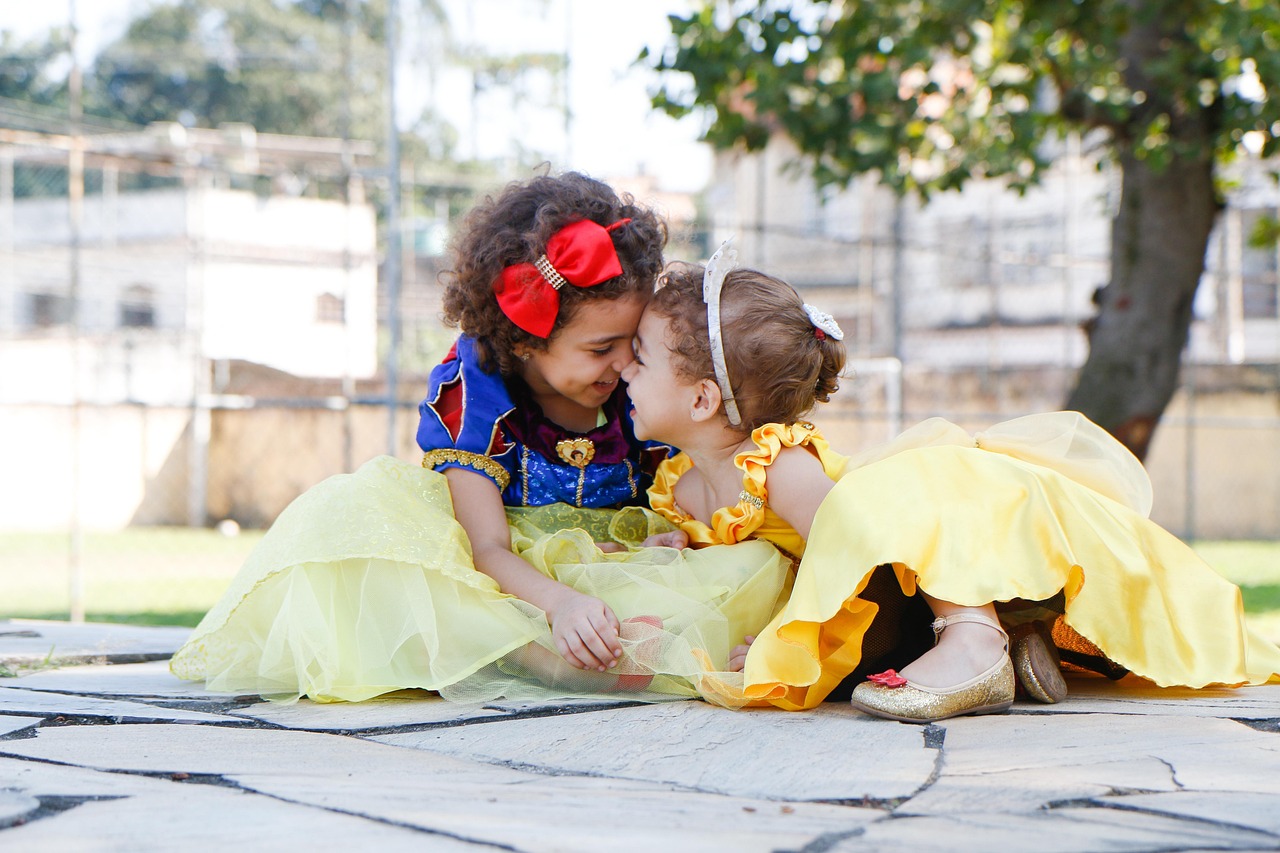
11. **The Broader Industry Contraction and Competitive Landscape**Disney’s sweeping internal changes are not isolated phenomena but rather reflective of a broader, systemic contraction and transformation sweeping across the entire entertainment industry. Hollywood has been grappling with a cost-cutting mode for several years, marked by reduced production figures and employment in a downward spiral. Studios are increasingly opting to release fewer films in an effort to boost profitability, especially as theatrical attendance continues to lag behind pre-pandemic levels, forcing a re-evaluation of traditional distribution models.
This industry-wide shift is profoundly influenced by changing consumer behaviors, particularly the widespread cancellation of cable-TV subscriptions in favor of streaming services. This trend directly “crimps advertising and distribution revenue for operators of traditional channels,” creating immense pressure on legacy media companies. Consequently, numerous major players are undertaking significant reorganizations to adapt to this new reality. Comcast Corp., for instance, plans to spin off most of its cable-TV channels, including MSNBC, USA, and CNBC, by the end of this year.
Similarly, Warner Bros. Discovery Inc. has completed an internal restructuring to separate its studio business and its cable-TV operations, potentially facilitating a divestment of the latter division. More cuts are anticipated at Paramount Global as it pursues a potential merger with Skydance Media. Even Disney, which had initially weighed divesting its own TV networks, including ABC, ultimately decided to retain these assets, albeit under a restructured model. These actions collectively paint a picture of an industry in flux, where traditional revenue streams are diminishing, and strategic adaptation, often involving painful cuts and reorganizations, is paramount for survival and future growth.
Read more about: Understanding the Underlying Factors in US Regional Economic Dynamics: A Deeper Look Beyond Headlines
12. **Disney’s Future Outlook: Agility, Profitability, and Long-Term Vision**Looking ahead, The Walt Disney Company’s strategic direction is firmly centered on fostering greater agility, enhancing profitability, and securing its long-term dominance in a continuously evolving entertainment landscape. The aggressive cost-cutting initiatives, the targeted layoffs, and the fundamental restructuring of its content strategy are all integral components of CEO Bob Iger’s vision to create a more resilient and responsive organization. By streamlining operations and realigning resources, Disney aims to improve decision-making processes and ensure that every segment of the company contributes directly to its core objectives.
Iger’s emphasis on quality over quantity and the strategic pivot towards direct-to-consumer streaming are designed to future-proof Disney against ongoing industry transformations. The impressive Q2 2025 earnings report, particularly the return to profitability for its streaming services and the growth in its theme parks and sports divisions, provides tangible evidence that these strategies are beginning to yield positive results. The company’s commitment to cutting an additional $2 billion in expenses in 2024 further underscores its dedication to fiscal prudence and long-term financial health.
As Disney continues to navigate this period of profound change, stakeholders across the industry will be closely monitoring the effectiveness of its restructuring efforts and their impact on market position and stock performance. The coming months and years will be critical in demonstrating how successfully Disney integrates its new operational efficiencies with its unparalleled creative legacy, ensuring it remains a global entertainment powerhouse capable of sustained success in the 21st century. The path ahead is challenging, but Disney’s concerted efforts to adapt and innovate suggest a determined pursuit of a more agile, profitable, and enduring future.
The comprehensive overhaul underway at Disney, from its executive ranks to its production pipelines, represents a bold and necessary response to the seismic shifts within the entertainment industry. The decisions made and the strategies implemented are reshaping not just a single corporation, but influencing the trajectory of Hollywood itself. As the company continues its journey of transformation, the focus remains clear: to emerge leaner, more efficient, and better positioned to deliver the magic and innovation that consumers globally have come to expect from the iconic Walt Disney Company. This is not merely about surviving the present, but about defining the future of entertainment.

